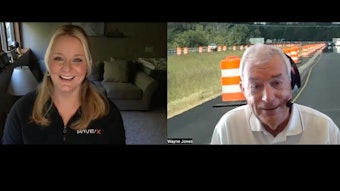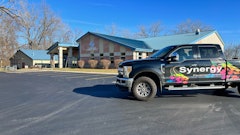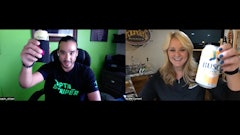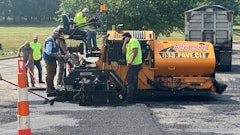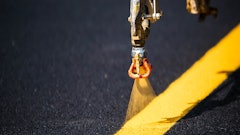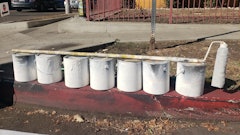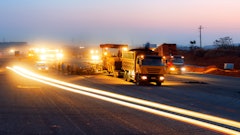
Tom McLeod, owner of Proline West in Loveland, CO, knows that to be competitive in airport runway and taxiway striping you need to find the best way to apply high quality and high precision markings. To make his company more competitive, and to ensure he is getting the most precise markings he can, McLeod uses GPS for his airport layouts.
McLeod and his brother started Proline in 2001 as a strictly airport marking business. McLeod, a third generation McLeod in the asphalt business, saw there was a demand for this niche market in his area.
Proline does work for the Federal Aviation Administration in Colorado, Wyoming, Utah, and New Mexico. Over the last few years, Proline has also diversified into parking lots, roadway striping, and sign installation, but the majority of the company's business still comes from airport marking.
McLeod knew right away that precision was key in airport marking layout. That's where his GPS has come in handy.
"We've gone from center pins and using transits to using GPS. And the GPS has simplified my layout process ten fold," McLeod says.
The GPS system allows McLeod to first create the layout on a computer. From there, the layout - with the exact coordinates - is uploaded to the GPS system which McLeod can then take onto the runway to mark the layout. Once the coordinates are marked the crew can then come back through and snap the chalk lines to "connect the dots."
"As far as time, GPS cuts layout in a third or even in half," McLeod says. You don't have to manually be out on the runway finding center points and radices.
Being able to do the work in less time offers Proline a competitive advantage in airport marking. But FAA rules and regulations also keep the company busy.
"General aviation and reliever airports require markings be redone every two years," McLeod says. In addition, areas with weather extremes, especially snow, may need restriping every year.
McLeod says Proline usually has between six and 12 airport striping jobs a year. Another benefit McLeod sees in this niche is the opportunity to travel. "Working in the Mountain Time Zone is like and adventure," he says. The airport striping jobs he has done have allowed him to see the greatest sites of the areas.
Proline's diversification into commercial marking helps round out the company's workload
But for Proline, diversification isn't just about staying afloat in the industry. McLeod is determined and dedicated to bringing the precision and quality required of airport markings to all the commercial marking jobs he takes on.
"We're taking the whole FAA process with its regulations, precision, and quality and moving it right into the local market. I want to set a standard in the industry."



